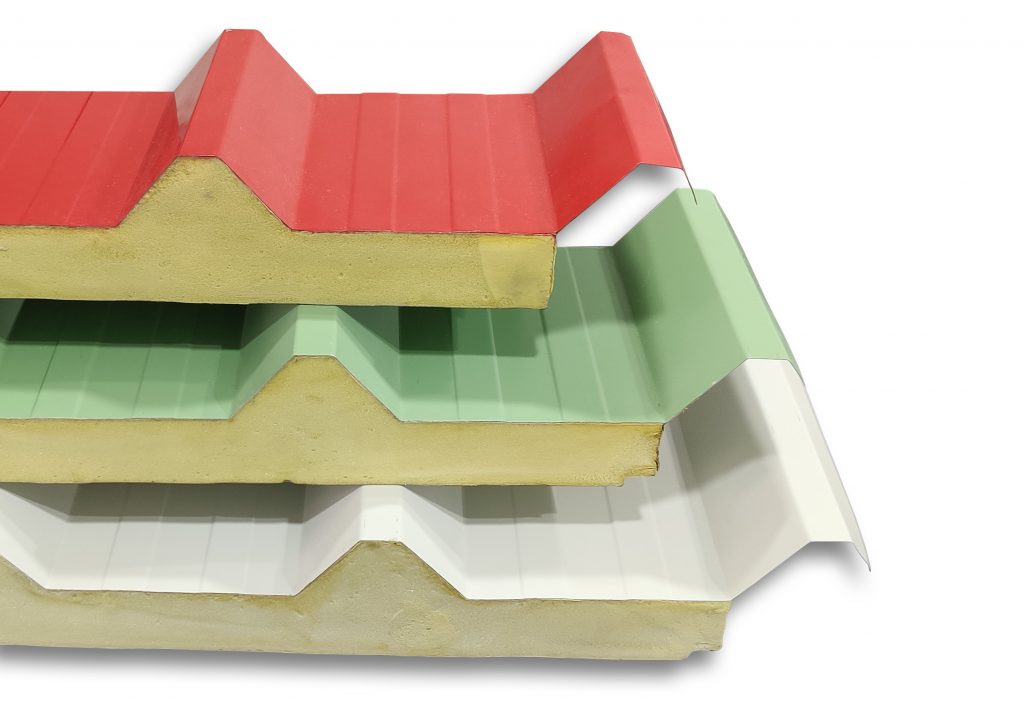
The benefits of insulated sandwich panels
July 18th, 2023
Category: All Blogs, Roofing Solutions
Introduction:
In today’s rapidly evolving world, energy efficiency and sustainable construction practices have become increasingly important. Insulated sandwich panels have emerged as a game-changer in the construction industry, offering numerous benefits that make them a preferred choice for architects, builders, and property owners alike. These panels, consisting of a core insulation material sandwiched between two durable outer layers, are revolutionizing the way we design and build structures. In this blog, we will explore the many advantages of insulated sandwich panels and understand why they are transforming the construction landscape.
1. Excellent Thermal Insulation:
One of the most significant advantages of insulated sandwich panels is their exceptional thermal insulation properties. The core insulation material, typically made of expanded polystyrene (EPS), polyurethane (PUR), or mineral wool, effectively minimizes heat transfer through the panels. This insulation capability helps maintain a comfortable indoor environment by reducing heat loss in winters and heat gain during summers. As a result, buildings constructed with insulated sandwich panels require less energy for heating and cooling, leading to reduced energy consumption and lower utility bills.
2. Enhanced Energy Efficiency:
The superior thermal insulation offered by sandwich panels directly contributes to improved energy efficiency in buildings. By minimizing heat transfer, these panels help to create a well-insulated building envelope, reducing the reliance on heating, ventilation, and air conditioning (HVAC) systems. As a result, energy consumption for climate control is significantly reduced, leading to substantial cost savings and a reduced carbon footprint. With the increasing focus on sustainability, insulated sandwich panels play a crucial role in achieving energy-efficient and eco-friendly buildings.
3. Quick and Easy Installation:
Insulated sandwich panels are designed for easy and rapid installation, making them a preferred choice for construction projects with tight deadlines. The panels are pre-fabricated, meaning they are manufactured off-site and delivered to the construction site ready for installation. This eliminates the need for extensive on-site fabrication and reduces the overall construction time. The quick installation not only saves time but also minimizes labor costs, making insulated sandwich panels a cost-effective solution.
4. Structural Integrity and Durability:
The sandwich construction of these panels provides excellent structural integrity and durability. The outer layers, often made of galvanized steel or aluminum, offer protection against weather elements, corrosion, and impact. Additionally, the core insulation material provides rigidity and strength to the panels. The combination of these factors results in a sturdy and long-lasting building envelope that requires minimal maintenance and repairs over its lifespan.
5. Design Flexibility:
Insulated sandwich panels offer architects and designers a wide range of design options. They are available in various sizes, thicknesses, and finishes, allowing for versatility in construction projects. The panels can be easily customized to meet specific design requirements, enabling architects to create visually appealing and aesthetically pleasing structures. Whether it is for industrial warehouses, commercial buildings, or residential homes, insulated sandwich panels offer flexibility in design while maintaining their functional advantages.
6. Fire Resistance:
Fire safety is a critical consideration in building construction. Insulated sandwich panels often include fire-resistant insulation materials, such as mineral wool or fire-rated foam cores. These materials provide excellent fire resistance, preventing the spread of flames and enhancing the overall safety of the building. Choosing insulated sandwich panels with the appropriate fire-resistant properties ensures compliance with building codes and regulations.
Conclusion:
Insulated sandwich panels have revolutionized the construction industry by combining thermal insulation, energy efficiency, ease of installation, structural integrity, design flexibility, and fire resistance into a single building material. Their benefits extend beyond cost savings and sustainability to provide comfortable indoor environments, reduced energy consumption, and enhanced durability. As the world increasingly emphasizes green building practices and energy-efficient solutions, insulated sandwich panels have become a go-to choice for constructing modern, sustainable, and visually appealing structures. With their wide-ranging advantages, these panels continue to shape the future of construction, contributing to a more sustainable and energy-conscious built environment.
Leave a Comment
